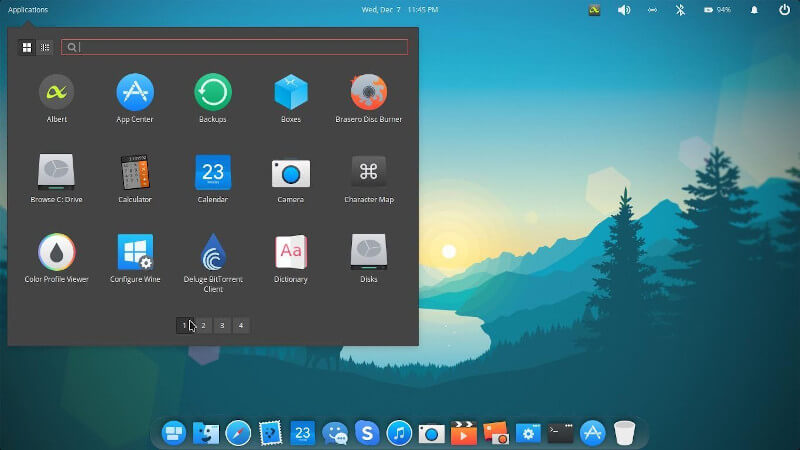- Feb 14, 2009 ATTENTION: this is for people wanting to install Linux Mint 15 on a Mac Mini to become Linux only in SINGLE boot, without any Mac OS X alongside it. If you want to dual boot OS X and Linux Mint there are other tutorials out there that work, normally involving Boot Camp and rEFIt or rEFInd.
- While some functionality differs from Mac to Windows to Linux, the core features of GoToMeeting are present on every platform:. Start and join online meetings from anywhere. Talk through clear, built-in audio options. See the presenter’s screen or share your own. Chat with individuals or the whole group.

Aug 29, 2019 macOS and Linux share a common heritage. Unfortunately, that does not mean applications can smoothly transition between the operating systems. To run Mac apps on Linux, you’ll need some sort of virtual machine or translation layer. Run a macOS Virtual Machine (All Apps) The most reliable way to run Mac apps on Linux is through a virtual machine. No matter how much the elementary OS team denies it, there are resemblances to. May 14, 2020 We’ve established how easy it is to make Ubuntu look like a Mac but theming Linux Mint, the popular Ubuntu-based offshoot, is a little trickier. It’s now possible to make Linux Mint look like a Mac too, and it’s all thanks to a customised version of the uncannily accurate macOS Mojave GTK theme we highlighted a few weeks ago.
 After going through a painful process to convert my Mac mini to a Linux only machine I decided to post how to do it.
After going through a painful process to convert my Mac mini to a Linux only machine I decided to post how to do it.ATTENTION: this is for people wanting to install Linux Mint 15 on a Mac Mini to become Linux only
 in SINGLE boot, without any Mac OS X alongside it. If you want to dual boot OS X and Linux Mint there are other tutorials out there that work, normally involving Boot Camp and rEFIt or rEFInd. I decided to make my mac mini Linux olny after installing in dual boot and then spending a few months without using Max OS X... decided to reclaim all the HD for use in /home.
in SINGLE boot, without any Mac OS X alongside it. If you want to dual boot OS X and Linux Mint there are other tutorials out there that work, normally involving Boot Camp and rEFIt or rEFInd. I decided to make my mac mini Linux olny after installing in dual boot and then spending a few months without using Max OS X... decided to reclaim all the HD for use in /home.My Mac mini model is A1283 (http://en.wikipedia.org/wiki/Mac_mini#Specifications_2), YMMV if you have a different model.
Distro was Linux Mint 15 MATE 64bit. I originally experimented with Mint 14 XFCE due to limited RAM (1Gb) but after upgrading to 4Gb decided to go Mint 15 MATE.

 So, here we go... I downloaded live DVD, booted into it then selected Install Linux Mint. Asked to wipe everything and install, then got an error informing automatic partitioning wouldn't be able to install the bootloader. Chose to do manual partitioning (an option named 'something else' if I recall correctly).
So, here we go... I downloaded live DVD, booted into it then selected Install Linux Mint. Asked to wipe everything and install, then got an error informing automatic partitioning wouldn't be able to install the bootloader. Chose to do manual partitioning (an option named 'something else' if I recall correctly).I didn't get it right the first time, so to make a long story short, here is what the final partitioning that worked looks like:To pay attention: in MY case Linux Mint was installed on /dev/sda2 (partition number 2) and the boot loader on /dev/sda1 (partition number 1). Your case may be different, change /dev/sda1 and /dev/sda2 in the examples below if needed. My case is strange because the first partition was numbered 5, probably because I created it by spliting my partition 1 in two, when partitions 2, 3 and 4 already existed.
Mac Theme For Linux Mint 19
To do your homework to find out your partition numbers:
Code: Select all
You need to leave a small partition at the start, unformatted, with bios_grub flag on, then another one about 90Mb of size formatted with fat32 and with boot flag on. I don't recall now if it was possible to set those flags in the installtion procedure... but you'll be able to set them with gparted, which can be invoked from the command line.I performed the installation, then at the end an error message came up informing it was impossible to install the boot loader. I chose continue without boot loader, finished and did NOT reboot.
Then in a terminal I forced the installtion of GRUB with:(remember, in MY case GRUB was being put in /dev/sda1 and Mint on /dev/sda2, adapt if your partition numbers are different).
Then, I rebooted. No, it didn't work automatically. I was greeted with a grub rescue prompt.
Next step, learned from this link (http://askubuntu.com/questions/192621/grub-rescue-prompt-repair-grub) was to manually get it to boot. In MY case where partition 2 was where Mint was installed, I used the commands below. If your Mint is in another partition, change 2 for that number:
Mac Icon For Linux Mint
Code: Select all
Mac Theme For Linux Mint 18
Then Mint from the HD came up, so the boot worked. Next step was to update Linux Mint just in case, then follow instructions in this thread (http://linuxnorth.wordpress.com/2012/02/07/repairing-grub/) and use boot-repair. Commands were:Then pressing the main button and telling it to continue despite my EFI partition being smaller than 100Mb, it repaired the boot loader and then everything worked.I hope there are other mac mini owners out there who find this useful.
Mac For Linux Mint Julep
Mac For Linux Mint Usb
The mac mini is a nice piece of hardware, but the OS X that came with it is slow and cumbersome. Linux Mint 14 or 15 with XBMC and a simple Apple remote (properly configured so the buttons work good in xbmc) turned my mac mini into a formidable media center.